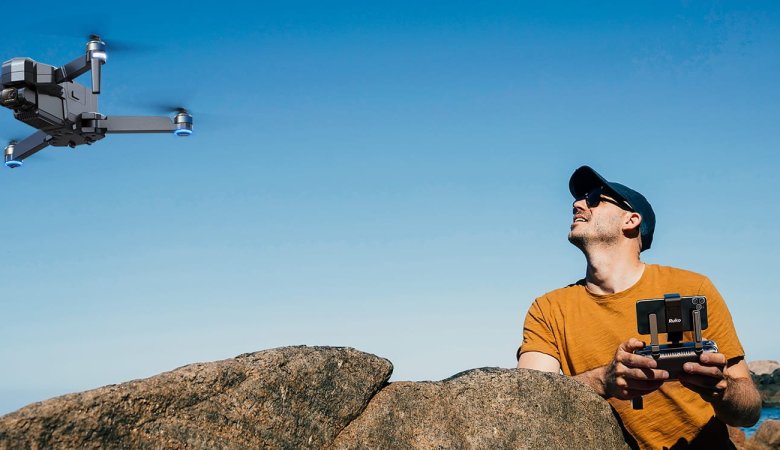Have you ever thought about what exactly photography is? Well, it is a transformative art form that enables people to freeze time, tell tales, and elicit feelings through visuals. Understanding and mastering numerous techniques is essential for individuals beginning their journey into photography if they want to produce engaging and memorable images.
Among the countless methods at your disposal, framing stands out as a potent tool to improve the composition of your pictures. By using components from the scene to direct the viewer’s eyes toward the focal point, framing creates images that are both aesthetically beautiful and narratively compelling.
In this article, we’ll delve into some fantastic ideas for framing, examine their complexities, and offer a wealth of creative photography ideas for beginners.
Amazing Framing Ideas for Beginners
Framing in photography requires carefully placing objects close to the subject to establish a visual border. This border, frequently created by scene elements, is a window into the image, drawing focus to the focal point. The outcome is a multi-layered composition that gives the picture more depth, context, and mystery.
Let’s have a look at some of these fantastic photography ideas for beginners:
1. Always Use Natural Frames
Beginner Photography Ideas Nature frequently offers us beautiful framing possibilities. You can use arches, trees, greenery, and even mountain ranges as natural frames. Create an aesthetically beautiful composition with a hint of organic by placing your subject within these frames.
2. Making Leading Lines Look Good
Vital compositional components called leading lines naturally draw the viewer’s attention to the subject. Excellent leading lines, pathways, fences, rivers, and architectural lines can give your picture a sense of movement and direction.
3. Transcending Through Doors and Windows
Use your imagination to indulge in artistic voyaging by taking photos through windows and doorways. This method adds an intriguing element to the narrative, giving the impression that the viewer is peeping into a secret world. The window or entryway frame gives the topic inside a natural setting.
4. Experiment With Silhouettes
Experiment with taking pictures of silhouettes against colorful skies at sunrise or sunset for mesmerizing shapes. Visually arresting photographs that stir feelings and communicate the strong contrast between the black outline and the vibrant backdrop produces stories.
5. Accept Foreground Components
Adding foreground items to your shot, such as flowers, rocks, or low-lying branches, gives it a three-dimensional depth. The spectator is drawn into the action and is no longer just an observer but a participant.
6. A Mirror to Creativity
Reflection frames can be made from water, mirrors, or even glass. Reflections allow you to create symmetrical compositions with double the visual impact.
7. Use the Power of Cropping
A photographer’s canvas uses post-processing in the field of photography. Don’t be afraid to crop your photos to improve the framing strategically. You can increase the overall effect of your shot by removing unnecessary features and concentrating on its most important ones.
8. Frames Within Frames
Learn how to use nested frames in your environment. These could be natural frames like rock formations, arches inside more giant constructions, or windows inside historic buildings. These layers in the image give it depth and curiosity.
9. Playing with Depth of Field
To isolate your subject from the backdrop or foreground, try using a shallow depth of field. It draws attention to the issue effortlessly by forming a natural frame around it.
10. Accept Patterns and Symmetry
Accept patterns and symmetry in your composition. These components serve as visual clues that draw the viewer’s focus to the main subject. The end effect is a picture that radiates equilibrium and harmony.
Conclusion
In photography, framing is a crucial tool that provides countless creative opportunities. It’s important to remember that practice makes perfect for a novice. Try out numerous framing strategies, modify them to fit different contexts, and, most importantly, develop your voice.
Framing can elevate your photography from ordinary to remarkable, whether photographing vast landscapes, close-up portraits, or commonplace scenes.
Framing is more than drawing a line around your subject; it also involves crafting a story, directing the viewer’s eye, and stirring feelings. As you immerse yourself in the realm of photography, remember that every frame has a narrative you must make compelling.
So grab your camera, look at your surroundings, and go on a photographic journey where each frame is a work of art.
Frequently Asked Questions
Can I Employ Framing in Landscape and Portrait Photography, for Example?
Absolutely! A flexible technique, framing can be used in many different types of photography. You can frame the beautiful scene in landscapes with objects like trees, rocks, or natural arches. To give the subject dimension and context, doorways, windows, or even greenery can be employed in portraits. The secret is to customize the framing to the particular idea or narrative you wish to present.
What Common Blunders Should New Users of Framing Steer Clear Of?
Overcomplicating the frame can result in a cluttered composition, a typical mistake. Keep it straightforward, and watch that the frame doesn’t obscure the main subject. Neglecting the background is another error; ensure the framing components harmonize with the topic and the overall scene. Last, use discipline when selecting the framing components; not every detail must be displayed in the frame.
Do I Need to Buy Pricey Equipment to Use Framing Properly?
No, you don’t require pricey tools to become an expert framer. The simplicity of this method is what makes it so beautiful. Naturally occurring objects like trees, doorways, or architectural aspects can make suitable frames. Equipment is less crucial than your imagination and compositional knowledge. However, a camera with manual settings can give you more control over elements like depth of field.







Leave a Reply